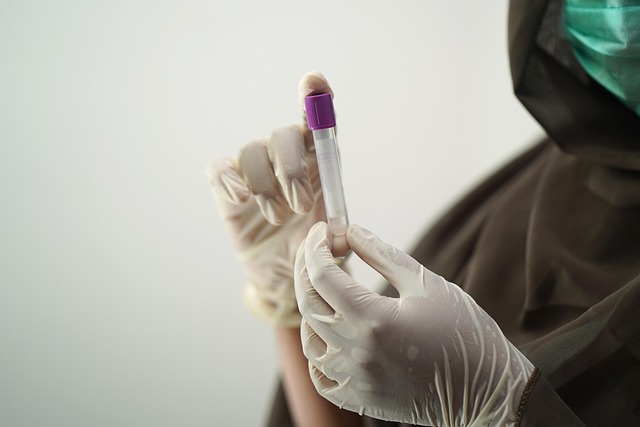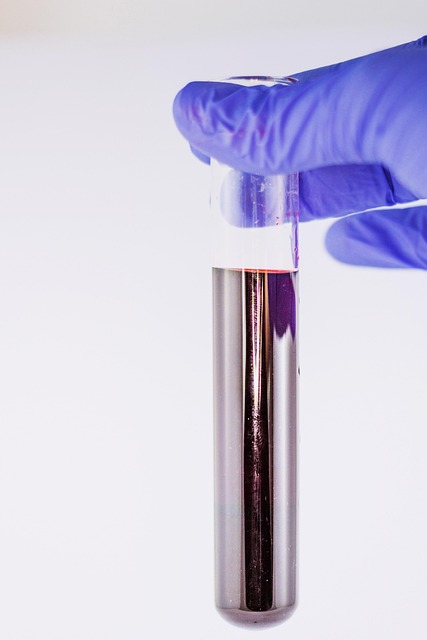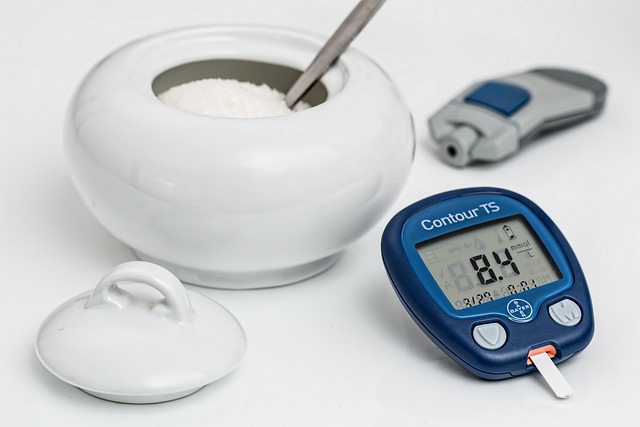Understanding thyroid functions is vital when preparing for a home thyroid blood test. Ensure supplies and optimize hormone levels through diet and lifestyle adjustments. Interpret test results by understanding key markers like TSH, T3, and T4 to determine if further medical intervention is needed.
Preparing for a thyroid blood work is essential for assessing your thyroid health. This comprehensive guide, tailored for those considering a home thyroid blood test, walks you through every step. We’ll start by understanding your thyroid’s function and its impact on your body. Next, we’ll cover gathering the necessary supplies and preparing for the blood draw. We’ll also offer tips to make the process less stressful. Additionally, learn how to interpret key thyroid markers and what they mean.
- Understand Your Thyroid and Its Function
- Gather Necessary Supplies and Equipment
- Prepare for Blood Draw: Tips and Tricks
- Interpret Results: Understanding Thyroid Markers
Understand Your Thyroid and Its Function

Understanding your thyroid and its functions is crucial when preparing for a home thyroid blood test. The thyroid gland, located at the base of your neck, plays a pivotal role in regulating your metabolism. It produces hormones that influence nearly every cell in your body, affecting everything from heart rate and digestion to reproduction and brain development. A home thyroid blood test can help you identify potential issues early on.
Knowing the signs you need a thyroid blood test—such as fatigue, weight changes, irregular periods, or dry skin—is essential for proactive healthcare. Furthermore, understanding what a thyroid function panel explanation entails can demystify the process and empower you to take charge of your health holistically.
Gather Necessary Supplies and Equipment

Before preparing for your home thyroid blood test, make sure you have all the necessary supplies and equipment on hand. This includes a testing kit specifically designed for measuring thyroid-related hormones like T3, T4, and TSH (thyroid stimulating hormone). You’ll also need a clean, dry finger to prick for a drop of blood, and sterile lancets or a small needle to ensure accurate results. Additionally, have some cotton balls or tissues handy to clean up afterward, as well as a secure location to store your test kit until it’s time to send the samples in for analysis.
Understanding the symptoms of an overactive thyroid gland is crucial when interpreting your results. While you can’t diagnose thyroid issues yourself, being aware of common signs like increased heart rate, weight loss despite normal appetite, restlessness, and heightened sensitivity to heat can help you identify potential red flags. This knowledge will empower you to discuss your test findings with a healthcare professional for a more comprehensive assessment.
Prepare for Blood Draw: Tips and Tricks

Preparing for a thyroid blood draw is essential for accurate results and ensuring a smooth process. One week before your appointment, consider adjusting your diet and lifestyle to optimize hormone levels. Avoid excessive caffeine and sugary foods, as they can disrupt thyroid function. Instead, focus on a balanced diet rich in iodine, selenium, and zinc—nutrients vital for thyroid health. Incorporate seafood, nuts, seeds, and leafy greens into your meals.
On the day of the test, arrive well-rested and avoid any strenuous exercise or physical activities that might elevate your stress levels. Remember, stress can impact hormone production. Dress comfortably and bring a support person if it helps ease any anxiety. By following these tips, you’re not just preparing for a home thyroid blood test (or at-home thyroid monitoring); you’re also taking control of your health by enabling accurate assessments of treatable thyroid conditions at home and reaping the benefits of at-home thyroid testing.
Interpret Results: Understanding Thyroid Markers

After completing your home thyroid blood test, the next step is to interpret the results and understand the various thyroid markers. This involves familiarizing yourself with key indicators such as TSH (Thyroid-Stimulating Hormone), T3 (Triiodothyronine), and T4 (Thyroxine). These hormones play a crucial role in regulating your metabolism.
A normal TSH level typically ranges from 0.4 to 4.0 mIU/L, while optimal T3 and T4 levels can vary slightly. Fasting requirements for thyroid tests are generally not strict, but it’s recommended to follow the specific guidelines provided by your healthcare professional or home testing kit manufacturer. Understanding these markers is essential in determining whether you need further medical intervention or if your thyroid screening recommendations for women align with your test results, especially for adults considering the best thyroid tests available.
Preparing for a home thyroid blood test involves understanding your thyroid, gathering the right supplies, and following proper preparation tips. By knowing the function of this crucial gland and interpreting key thyroid markers, you can effectively navigate the process. Remember to consult with a healthcare professional before administering any tests and follow their guidance for optimal results. With these steps, you’re well-equipped to take control of your thyroid health through at-home blood testing.
